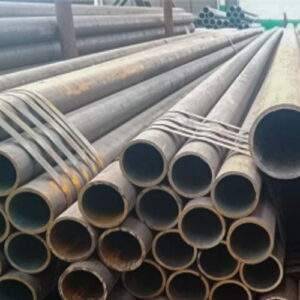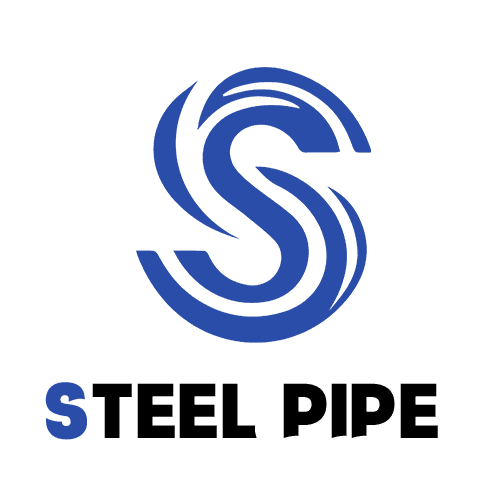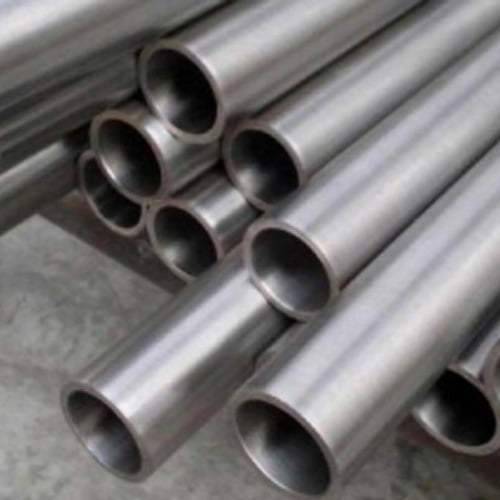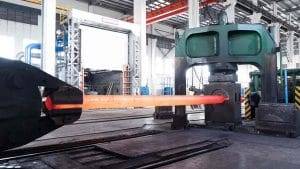Welcome to My Blog!
Before we dive into the content, I’d love for you to join me on my social media platforms where I share more insights, engage with the community, and post updates. Here’s how you can connect with me:
Facebook:https://www.facebook.com/profile.php?id=61559060896490
Now, let’s get started on our journey together. I hope you find the content here insightful, engaging, and valuable.
Table of Contents
Introduction
When it comes to construction and manufacturing, the choice of materials is crucial to the success of any project. Among the various options available, steel seamless pipes stand out for their strength, durability, and versatility. These pipes are widely used in a variety of applications, from oil and gas transportation to structural support in buildings. This comprehensive guide will help you navigate the complexities of selecting the right steel seamless pipe for your specific project needs. We will explore the various types, specifications, and factors to consider, ensuring you make an informed decision that aligns with your requirements.
Understanding Steel Seamless Pipes

What is a Steel Seamless Pipe?
A steel seamless pipe is a type of pipe that is manufactured without any welded seams. Instead, it is produced from a solid round steel billet that is heated and then pushed or pulled over a form until it reaches the desired length and diameter. This manufacturing process results in a pipe that has a uniform wall thickness and high strength, making it ideal for high-pressure applications.
Key Properties of Steel Seamless Pipes
- Strength and Durability: The absence of seams means that seamless pipes can withstand higher pressures and are less likely to fail under stress.
- Corrosion Resistance: Depending on the type of steel used, seamless pipes can be treated or coated to enhance their resistance to corrosion, making them suitable for harsh environments.
- Versatility: These pipes can be used in a wide range of applications, including oil and gas, construction, and manufacturing.
- Precision: Seamless pipes can be produced to exact specifications, ensuring a perfect fit for your project.
Types of Steel Seamless Pipes
Common Grades of Steel Seamless Pipes
- ASTM A106: This grade is commonly used for high-temperature service and is suitable for bending, flanging, and similar forming operations.
- ASTM A53: Often used for structural purposes, this grade is known for its good weldability and is suitable for various applications.
- API 5L: Designed for the oil and gas industry, this specification covers seamless and welded pipes for pipeline transportation systems.
- ASTM A312: This specification is for seamless and welded austenitic stainless steel pipes, ideal for high-temperature and corrosive environments.
Choosing the Right Grade
Selecting the appropriate grade of steel seamless pipe depends on the specific requirements of your project, including factors such as temperature, pressure, and the nature of the fluids being transported.
Applications of Steel Seamless Pipes
Diverse Uses Across Industries
- Oil and Gas: Seamless pipes are extensively used in the oil and gas industry for transporting crude oil, natural gas, and other fluids under high pressure.
- Construction: In construction, these pipes are used for structural applications, including columns, beams, and supports, due to their strength and durability.
- Manufacturing: Seamless pipes are also used in manufacturing processes, particularly in the production of machinery and equipment that require high-strength components.
Selecting the Right Steel Seamless Pipe

Factors to Consider
- Material Specifications: Ensure the pipe meets the necessary material specifications for your project, including standards set by ASTM or API.
- Size and Dimensions: The diameter and wall thickness of the pipe should be chosen based on the specific requirements of your application, including flow rates and pressure.
- Corrosion Resistance: Depending on the environment in which the pipe will be used, consider whether additional coatings or treatments are necessary to enhance corrosion resistance.
- Cost and Availability: Evaluate the cost of the pipe and its availability from suppliers, as this can impact your project timeline and budget.
Maintenance and Inspection
Regular maintenance and inspection of steel seamless pipes are essential to ensure their longevity and performance. This includes:
- Routine Inspections: Regularly check for signs of corrosion, wear, or damage, especially in high-stress applications.
- Cleaning: Keep the pipes clean to prevent buildup that could lead to corrosion or blockage.
- Documentation: Maintain records of inspections and maintenance activities to track the condition of the pipes over time.
Detailed Comparison of Steel Seamless Pipe Grades
| Grade | Tensile Strength | Yield Strength | Corrosion Resistance | Common Applications |
|---|---|---|---|---|
| ASTM A106 | 415-550 MPa | 240-310 MPa | Moderate | High-temperature service, power plants |
| ASTM A53 | 250-480 MPa | 205-310 MPa | Moderate | Structural applications, pipelines |
| API 5L | 350-600 MPa | 240-450 MPa | Moderate to High | Oil and gas pipelines |
| ASTM A312 | 515-750 MPa | 205-310 MPa | High | High-temperature and corrosive environments |
Conclusion
Choosing the right steel seamless pipe for your project is a critical decision that can significantly impact the success and longevity of your application. By understanding the different grades, their properties, and how they align with your specific requirements, you can ensure that your project benefits from the durability, strength, and corrosion resistance that steel seamless pipes provide. As the demand for high-quality materials grows, the importance of making informed choices about steel seamless pipes becomes increasingly significant.
FAQ
What are the main advantages of using steel seamless pipes?
Steel seamless pipes offer several advantages, including higher strength due to the absence of seams, better resistance to pressure, and versatility in applications. They are also less prone to leaks and failures compared to welded pipes.
How do I determine the right size of seamless steel pipe for my project?
To determine the right size, consider the flow rate, pressure requirements, and the specific application. Consulting with an engineer or using hydraulic calculations can help ensure you select the appropriate diameter and wall thickness.
Are seamless steel pipes suitable for all types of fluids?
Yes, seamless steel pipes can be used for various fluids, including water, oil, gas, and chemicals. However, it is essential to choose the right grade and material to ensure compatibility with the specific fluid being transported.
How do I maintain seamless steel pipes?
Regular maintenance includes routine inspections for corrosion or damage, cleaning to prevent buildup, and ensuring that any protective coatings remain intact. Proper storage and handling during installation are also crucial for maintaining pipe integrity.
What is the typical lifespan of seamless steel pipes?
The lifespan of steel seamless pipes can vary widely based on factors such as the environment, the type of fluid being transported, and maintenance practices. Generally, with proper care, they can last several decades.











